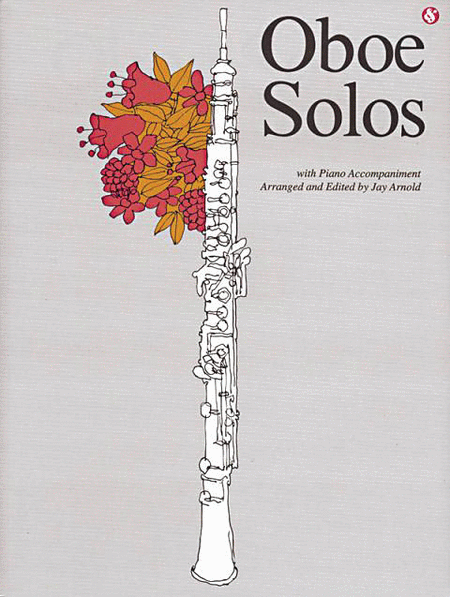ch hatte viel Bekümmernis (I had much grief), BWV
21,[a] is a church cantata by Johann Sebastian Bach. He
composed it in Weimar, possibly in 1713, partly even
earlier, and used it in 1714 and later for the third
Sunday after Trinity. The work marks a transition
between motet style on biblical and hymn text to
operatic recitatives and arias on contemporary poetry.
He catalogued the work as e per ogni tempo (and for all
times), indicating that due to its general theme the
cantata is suited for an...(+)
ch hatte viel Bekümmernis (I had much grief), BWV
21,[a] is a church cantata by Johann Sebastian Bach. He
composed it in Weimar, possibly in 1713, partly even
earlier, and used it in 1714 and later for the third
Sunday after Trinity. The work marks a transition
between motet style on biblical and hymn text to
operatic recitatives and arias on contemporary poetry.
He catalogued the work as e per ogni tempo (and for all
times), indicating that due to its general theme the
cantata is suited for any occasion.
The text is probably written by the court poet Salomon
Franck, including four biblical quotations from three
psalms and the Book of Revelation, juxtaposed in one
movement with two stanzas from Georg Neumark's hymn
"Wer nur den lieben Gott lässt walten". The cantata
possibly began as a work of dialog and four motets on
biblical verses. In its 1723 version, it is structured
in eleven movements, including an opening sinfonia and
additional recitatives and arias. It is divided in two
parts to be performed before and after the sermon, and
scored for three vocal soloists (soprano, tenor, and
bass), a four-part choir, three trumpets, timpani,
oboe, strings and basso continuo. Bach led a
performance in the court chapel of Schloss Weimar on 17
June 1714, known as the Weimar version. He revised the
work for performances, possibly in Hamburg and several
revivals in Leipzig, adding for the first Leipzig
version four trombones doubling the voices.
Bach composed the cantata in Weimar, but the
composition history is complicated and not at all
stages certain. Findings by Martin Petzoldt suggest
that the cantata began with the later movements 2–6
and 9, most of them on biblical text, performed at a
memorial service of Aemilia Maria Haress, the wife of a
former prime-minister of Schwarzburg-Rudolstadt at the
St. Peter und Paul in Weimar on 8 October 1713. Bach
may then have expanded it and presented it for his
application in December 1713 at the Liebfrauenkirche in
Halle. The performance material of this event, the only
surviving source, shows on the title page the
designation e per ogni tempo, indicating that the
cantata with its general readings and texts is suitable
for any occasion.
The music for this early cantata uses motet style in
the choral movements. Biblical words are used in a
prominent way. They are treated in choral movements,
different from other cantatas of the Weimar period
where they were typically composed as recitatives. John
Eliot Gardiner, who conducted all of Bach's church
cantatas in 2000 as the Bach Cantata Pilgrimage, termed
the cantata "one of the most extraordinary and inspired
of Bach's vocal works'. He notes aspects of the music
which are similar to movements in Bach's early
cantatas, suggesting that they may have been composed
already when Bach moved to Weimar in 1708: the psalm
verses resemble movements of cantatas such as Nach dir,
Herr, verlanget mich, BWV 150, and Aus der Tiefen rufe
ich, Herr, zu dir, BWV 131, the dialogue of the Soul
and Jesus (movement 8) is reminiscent of the Actus
tragicus, and the hymn in motet style (movement 9)
recalls movements 2 and 5 of the chorale cantata Christ
lag in Todes Banden, BWV 4.
The cantata in eleven movements is structured in two
parts, Part I (movements 1–6) to be performed before
the sermon, Part II (7–11) after the sermon. It is
scored for three vocal soloists (soprano (S), tenor (T)
and bass (B)), a four-part choir SATB, three trumpets
(Tr) and timpani only in the final movement, four
trombones (Tb) (only in later versions to double voices
in the second stanza of the chorale), oboe (Ob), two
violins (Vl), viola (Va), and basso continuo (Bc), with
bassoon (Fg) and organ (Org) explicitly indicated. The
duration is given as 44 minutes.
Source: Wikipedia
(https://en.wikipedia.org/wiki/Ich_hatte_viel_Bek%C3%BC
mmernis,_BWV_21).
The work is opened by a Sinfonia similar to the one of
the cantata Weinen, Klagen, Sorgen, Zagen, BWV 12,
possibly the slow movement of a concerto for oboe and
violin. A sighing motif, the picture of a storm of
tears, and the flood image conjured by the upwelling
music characterizes the dark and oppressive
feeling.
I created this transcription of the opening Sinfonia,
"Ich hatte viel Bekümmernis" (I had much grief) for
Oboe & Strings (2 Violins, Viola & Cello).












